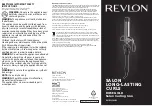
Clayton Steam Generator model EO-100-1M
PAGE 12 / 70
Instruction Manual, doc.nr.: MAN18206 Rev A PSC
3.1
GENERAL
The Clayton steam generator will deliver its rated output of 99% quality steam
(containing less than one
percent moisture).
The generator will develop its full rated pressure within five minutes from a cold start.
Standard equipment includes safety devices for protection against water failure, burner failure, excessive
pressure, and electrical overload. Automatic controls regulate the flow of the feedwater and modulate the
burner in accordance with steam load demand. An attendant in charge, however, must give the equipment
the attention prescribed in this manual.
3.2
WATER AND STEAM SYSTEM
3.2.1
FLOW
Supply water and return condensate blend in the hotwell. Water is pumped directly from the hotwell into the
heating coil, flowing through the spiral single passage section of the coil in a direction opposite to that of the
combustion gases, where it is rapidly heated to steam temperature. As the fluid leaves the generator section,
it passes through the ring thermostat tube and helically wound water wall section, into the separator nozzle in
the steam separator. The centrifugal force in the nozzle separates dry steam from excess water, which
returns to the lower section in the separator. Steam is delivered through the steam discharge outlet located at
the top of the steam separator. The excess water is returned to the hotwell through the steamtrap.
3.2.2
WATERPUMP
The diaphragm type waterpump is designed to
deliver sufficient water to maintain a wet coil at
all operating conditions. The pump is driven by a
electric motor and contains no stuffing boxes.
The diaphragms are operated through hydraulic
oil which is displaced by reprocicating pistons.
Corrosion-resistant springs, discs and seats are
used in the check valve housings. Tubular
columns separate the check valve housings from
the pump heads to keep excessive temperature
from the diaphragms. Snubbers absorb pressure
pulsations to ensure stabilized pump delivery. A
relief valve protects the pump against excessive
pressure. A pump oil level switch, float operated,
is mounted to the waterpump with a sensing tube
plumbed to the pump crankcase. This pump oil
level switch will secure the plant if there is
improper oil level in the waterpump, either too
low or too high.
Heating coil and separator
Fluid is circulated through a single-pass, continuous steel tube
(heating coil)
where it is progressively heated
to the steam temperature. It is then discharged into the steam separator where steam and liquid are separated.
The heating coil is mounted to allow free expansion. It is arranged to provide maximum heat absorption by a
series of coils with fluid counterflowing the combustion gasses at controlled velocities. A tightly wound
helical section tube forms the fluid wall around the combustion chamber.
A feedwater pressure gauge is mounted on the pump. A higher pressure indication than normal and/or a
leaking relief valve on the waterpump indicates a formation of scale or even partial restriction of the heating
coil.













































